Quintana Roo’s SRsix Road Bike (With Aero Data)
Here’s a little known fact about the Quintana Roo brand: its first bikes were not tri bikes, but road bikes. These were subsumed into the aero and triathlon milieu that has defined this brand, and disappeared from the line.
Sometimes it's just a matter of timing, and Quintana Roo road bikes are back! Well, they’ve been back, but the SRseries was not launched with a megaphone. The brand has kept the SRseries – its aero road bike – on the down-low pending the results of wind tunnel testing.
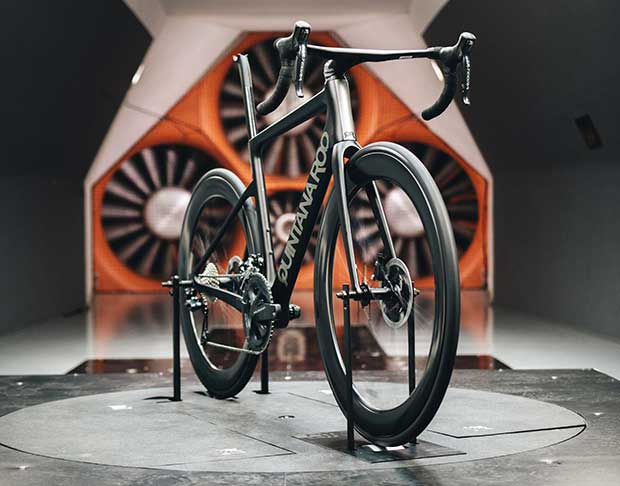
The bike getting launched today is the SRsix, which is the high-end lay-up. Specialized has the SWorks, Felt has the FRD, Canyon has the CF, and these are typically the same frames to the eye as downstreamed frames, they just have the Gucci carbon and the painstaking lay-ups in the mold. Likewise this. The SRsix is the “trickle up” version of the SRfive, which had already been in the line for some months now.
I have one of these framesets on the way to me, and there’ll be a “long term review” forthcoming. I am purchasing this frameset, as I am for the first time since 1976 without a road race bike. I thought I could scratch all my itches with my gravel bike but, alas, my gaze exceeded my grasp, and there was a bike-shaped hole in my garage that only a road bike would fill.
Fit & Geometry
I bought this frame not just because of its aeroness, but because of its geometry. The frame I got is in a size-L. The stack and reach of the SR series, in this size, is 580mm x 400mm respectively. The SRseries geometry in this size is almost exactly the same as the Cannondale SystemSix in size-58cm, and the Canyon Aeroad in size-L. This is very different geometry than, say, the Specialized Roubaix, the Cannondale Synapse, or the Canyon Endurace. A frame stack of 580mm to 590mm: this is my sweet spot, fitwise.
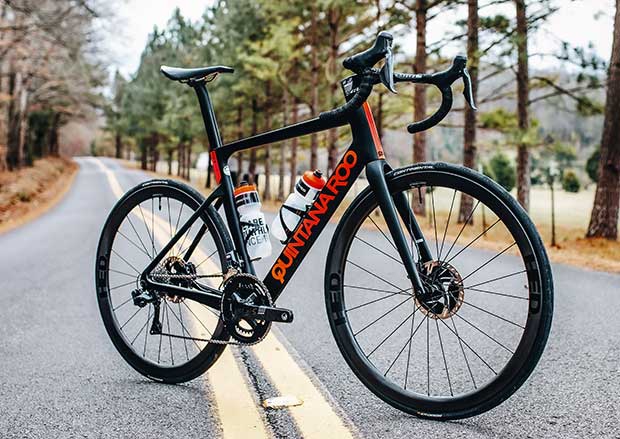
I waffle between a 56cm and a 58cm in road bike sizing based on 2 metrics: the frame’s “stack,” and the frame’s “front center.” The front center of the SR series in my size is 615mm. Something between 608mm and 615mm is what I’m looking for. This gives me a pretty good weight displacement over the bike. The reach of the frame I’m less worried about, because I can normalize for reach with a different stem length: if the frame’s reach is 390mm I put a 130mm stem on the bike; if it’s 400mm I put a 120mm stem on the bike. This assumes, of course, a particular handlebar geometry. If the road bar has a longer “bar” reach by 10mm, then I ratchet back the stem lengths 10mm accordingly.
The point is, this bike will fit me, and it will fit like other fairly aggressive road geometries. It’s not super long and low, it’s appropriately long and low. The next geometric step toward a higher front end would be, say, the Specialized Venge, the Cannondale SuperSix, and the Canyon Ultimate. And then you get into the taller, narrower “endurance” geometries like the Roubaix and the Endurace mentioned above, and those just don’t work at all for me. But I’m getting into the tall weeds here!
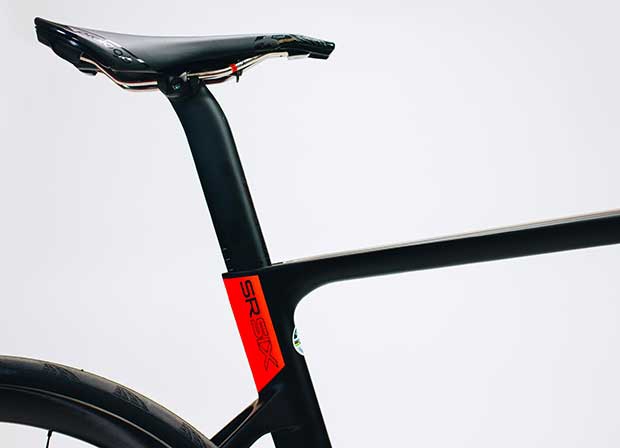
The one question I have is the steering geometry of these bikes, and we’ll see how this works out. The head angle is pretty slack, never getting steeper than 72° throughout the size run. The fork offset does not, however, increase as much as I would have thought. I would have assumed more like a 50mm offset when paired with a 72° head angle, and this bike has only 45mm of offset, meaning the resulting “trail” is quite large. The bike is (on paper) likely to track in a straight line, very stable, somewhat ornery when asked to turn (i.e., to sprint), and this is likely to make the bike behave with a particular personality. Is it stable without being lethargic? I don't know. I don't ride bikes "on paper." I don’t know without hiking my leg over the top tube and taking it out for a ride.
Aerodynamics
I have spoken to the folks at ABG, the parent company of Quintana Roo (the company also owns OBED and Litespeed), and my read of the company's body language is to fill its lungs with air and shout the announcement of this bike, more so than for the previously-released SRfive, because CFD is not the wind tunnel. You don't ride a bike on paper; you must ride it on the road. You don't know its drag on a computer screen; you have to get hold of the various bikes in your competitive set; set them all up in the same position; test them all; and see how you come out.
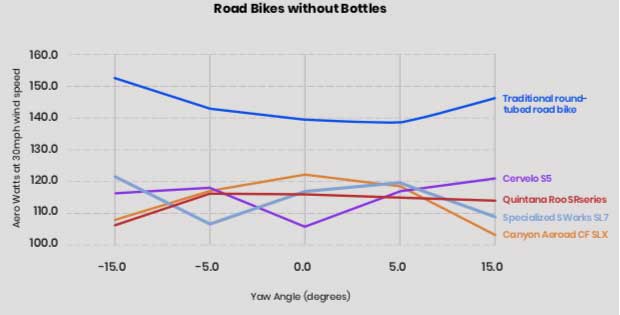
What got tested along with an SRseries bike were the Cervelo S5, the Specialized SWorks SL7, the Canyon Aeroad CF SLX, and all of them against a garden variety round-tubed road bike. The bikes were run in a sweep, 15° to 15°, at 30mph, at the A2 Low Speed Wind Tunnel in North Carolina.
All the bikes were tested in 2 configurations: without (chart above) and with (chart below) standard round tube bottles and cages. You can see how the testing came out. It will be interesting to see what our Reader Forum folks have to say about the protocols, both with respect to the way the tests were conducted, and the way the results were presented. For example, rather than grams of drag, the Y axis is displayed in watts, that is, the drag as measured on the scale was converted to watts.
What you see is that all the aero road bikes fight it out on a more or less equal footing with no frame bottles. The SRseries is more aero in a head-on wind, some of the other bikes are more aero in a yaw. Perhaps those with more surface area shine in a yaw, and the QR is just not a bike with a lot of surface area. It’s going to do well throughout the sweep.
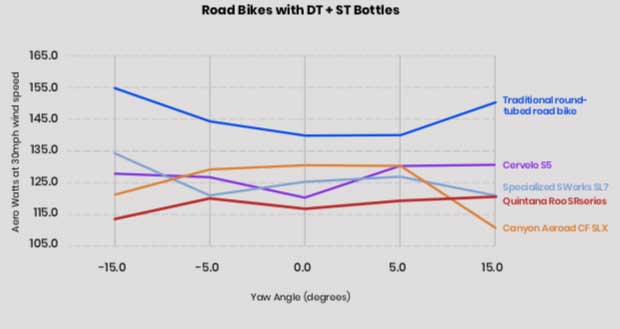
The SRseries comes into its own once you stick bottles on the frame, and we’re talking bottles on both down and seat tubes, and while I don’t know for sure, they look to my eye like 25oz bottles from the pictures I’ve seen of the testing. If I can channel the response of QR’s folks when looking at the results, it would be something like, “You want to ride your road bike with no frame bottles? Be our guest. Choose a different bike if that's how you ride.” That’s because when we all think about how we are really going to ride our road bikes (these are road bikes now, not tri bikes), it’s going to be with round bottles on our frames. You can see the paper QR developed for the wind tunnel test.
Purchase Pathways
Online configurators have staggered into our industry on unsteady feet. Orbea had a great one, back a dozen or so years ago, for sales here in the U.S., but it went away. Diamondback had a world-leading configurator for the Andean, but fell prey to business decisions that had nothing to do with that model. Cervelo has a configurator, but the options are limited. Trek is of course the leader in this, with its Project One program, but I get the sense Project One isn’t how Trek really makes its money.
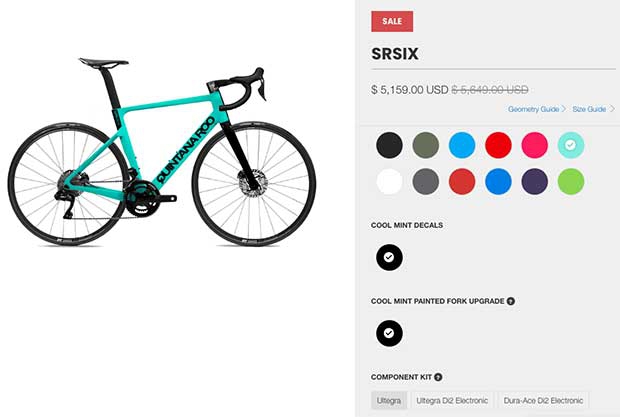
Quintana Roo has a configurator, and this is how it makes its money. ABG has moved all its paint, and all its complete bike assembly, to its Chattanooga, TN, factory. It is winning the logistics war. You can get the frame you what in the color you want with the parts you want, at your LBS or driven to your door.
What’s interesting is that MyBikeShop has oodles of options for the build – more than QR offers on its own configurator – and I don’t know how this is done. I need to get to the bottom of this! I find that all the color options – both frame color and decal treatment – is easier to see on QR’s configurator. If I bought a SRseries bike through MyBikeShop I’d probably use QR’s site to help me choose the cosmetic scheme and then, if I wanted the more expansive set of MyBikeShop’s groupset and wheel options (see the list of available categories in the screenshot below), I’d migrate over there to execute the purchase.
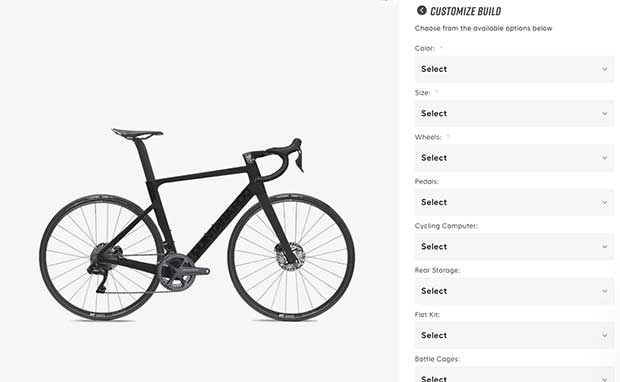
One thing: The SRsix comes with the Vision Metron 5D fully integrated one-piece carbon cockpit (pictured below). This is where “aero” clashes with “ergonomics” for me. When I’m tied to one stem length, one stem pitch, one handlebar geometry, then I get claustrophobic. I asked about this, and I can get this bike with a standard bar/stem front end. I’m not quite sure how that’s done, but there’s a text box on QR’s configurator entitled “Components Requests.” I would think that you could change the bar out of need be, and perhaps get a few bucks back.
However, those gaudy tunnel numbers came with the Vision bar on the bike, and I suspect bikes like this one, and the Cervelo S5 and the Canyon Aeroad, prosper when tested with the handlebars the bike designers had in mind.
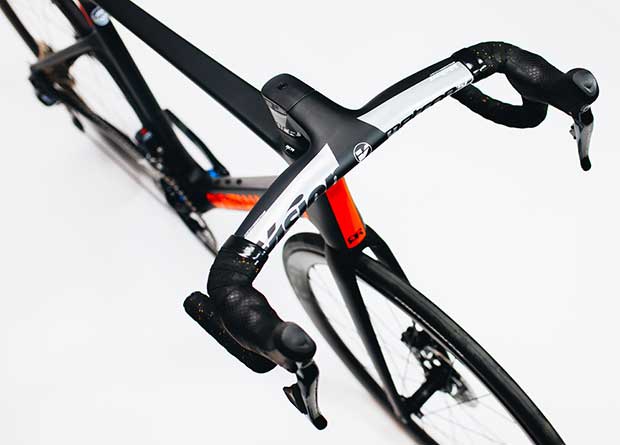
Price
This complete bike is available for just over $5,000 all the way to $10,000 if you get it with the Dura Ace Di2 and Zipp 404 NSW wheels. Add another $1,000 for a Rotor 2In-Power Dual-Side power meter. Because you all are my family; because families know each other; I know what flows from this. Cue the populist diatribe on bikes that cost as much as your parents paid for a car, and your grandparents paid for a house!
But this is the value of trickle-up product releases (like the release SRAM’s RED eTAP AXS 36T Max RD, 2 weeks ago). It’s hard to complain when a more affordable version of the product already exists. The SRfive is available now as a complete bike starting at $2,940.
My Gripe
Here’s my gripe, and the solution to my gripe. This bike uses the same routing motif as the Cervelo Caledonia. If I say – as I do above – that the value in getting a more standard stem & road bar config is in the modularity and ease-of-change in bar and stem geometry, how realistic is that if the hydraulic lines pass through the stem? Are you really going do everything required in order to change the stem? Recabling, rehosing, rebleeding?
I wrote about the Formula SpeedLock, and I have my SpeedLocks now, at-the-ready, for when this frame arrives. My plan is to shove as much hydraulic line in the frame as possible, so that if and when I want to change the stem I unscrew the faceplate, pull the handlebar out from the stem, exposing the SpeedLocks that are inside the stem, unhook the hydraulic lines, change the stem, and a 15 minute job becomes – instead of a 90 minute job – a 16 minute job. I’ll show all of this pictorially once I get it all done. This isn’t a gripe specific to this bike. Pick an aero road bike. This is my gripe about almost all of them (Cannondale’s Knot system the rare exception).
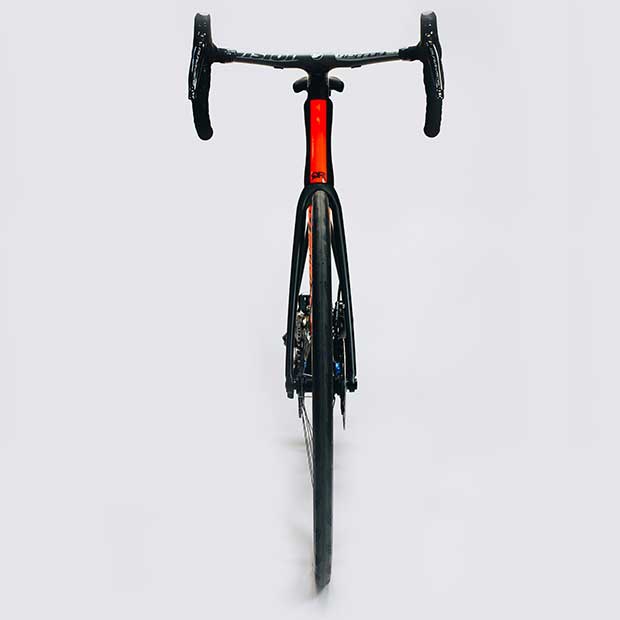
I’ve got a SRAM Force eTAP AXS groupset for this bike, and I’ve got a set of 65mm front and rear CADEX wheels, with a set of 32mm CADEX road tires, and this will be my first build on this bike. No, I don’t know whether that 65mm front wheel is advisable. I’ll see how it goes. Why 32mm? because this frame is advertised as taking 32mm tires, and I want to make sure it can. (And, I want to check out these new CADEX tires.)
As I watched the rise of Cervelo, one thing stood out to me, because of the particular industry position I was in at that time. The Holy Grail, if you’re a tri brand, is to become a brand. Cervelo did that. It went from making tri bikes to road bikes, and did so successfully, and that is very hard. Almost unprecedented. I could not pull that off. Now the brand that could not successfully sell road bikes under my husbandry is taking a second shot at this market, and it’s a shot more likely to succeed because the bike and the brand has a story, it has a demonstrably attractive set of aero metrics, and it’s got a world leading pathway-to-purchase.
Read more about the Quintana Roo SRsix.


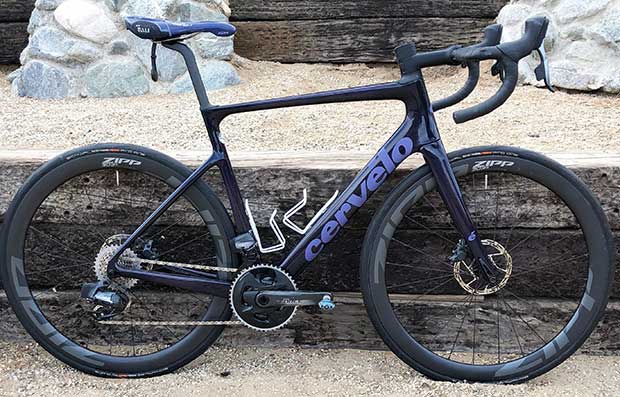
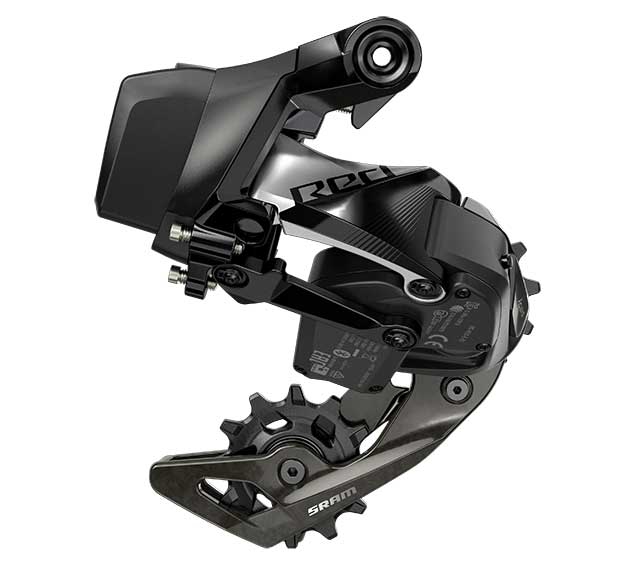
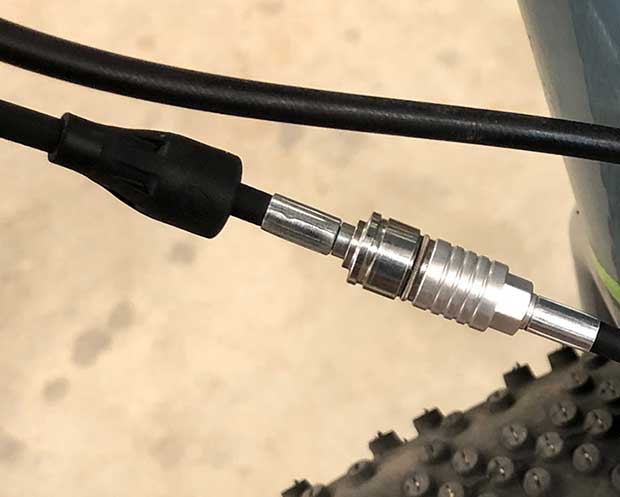
Start the discussion at slowtwitch.northend.network